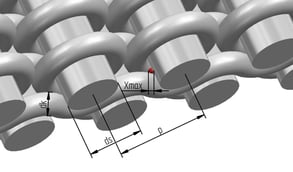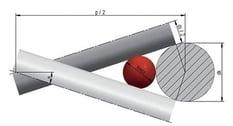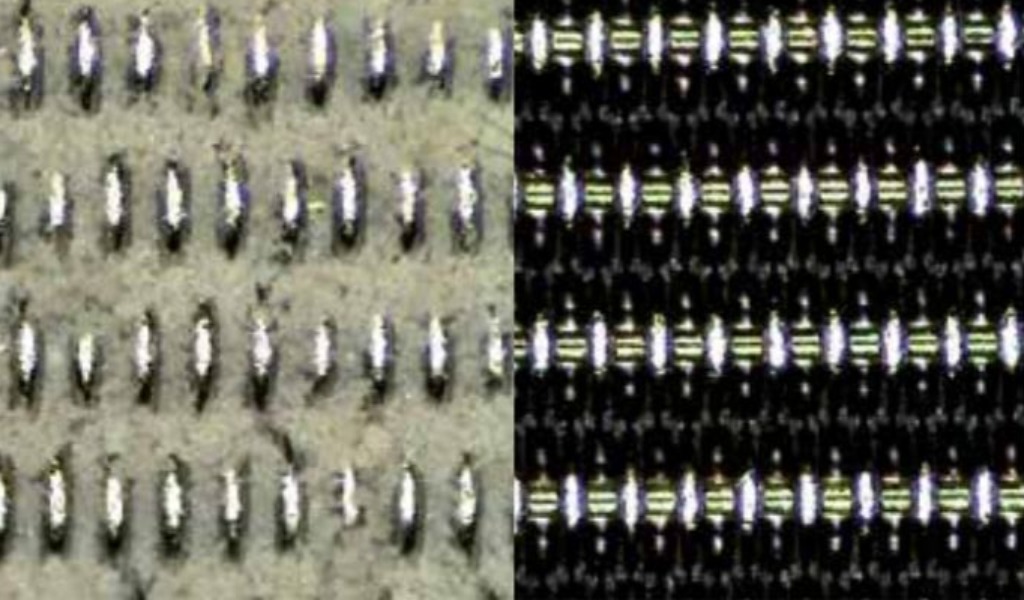Filter Cloth: Absolute vs Nominal Micron Rating
Today’s world is heavily influenced by filtration and, more specifically, the way in which floor engineers and filtration operators manage their filtration systems. From the various medical devices we use to the automotive industry and everything in-between, the proper filtration of contaminants is their top priority.
The reliability, resilience, and affordability of woven wire filter cloth makes it the ideal solution for most filtration applications. In order for floor engineers and filtration operators to properly implement a woven wire filter cloth, they must take several specifications into consideration.
Among these critical filter specifications are the nominal and absolute micron rating, with the term micron rating referring to the exact distance between the wires in the weave.
W.S. Tyler has worked with woven wire filter cloth for over 140 years and is here to help ensure you implement a filter cloth solution that provides optimal filtration.
With that, this article will define what nominal micron rating is, what absolute micron rating is, while also providing insight into when each should be used.
What is Absolute Micron Rating?
Absolute micron rating is best defined as the diameter of the largest particle that passes through the filtration medium. Floor engineers and filtration operators can determine the absolute micron rating of a filter cloth by using the glass bead testing method or the Bubble Point testing method.
The glass bead testing method uses glass micro-spheres that share a uniform size and are passed through the filter. The absolute micron rating is then determined after comparing the amount of glass beads that pass to a calibration graph that reflects the filter’s specifications.
The bubble point test method utilizes a calculated amount of pressure to force air bubbles through a piece of filter cloth that has been submerged in water. The absolute micron is determined after the amount of pressure needed to force the air bubbles through the cloth is analyzed, as it is a direct reflection of the pore size.
With that, the absolute micron rating of a filter cloth can also be calculated theoretically.
This form of micron rating is based on “flat” filter clothes and is tested in a laboratory setting.
Why Is Absolute Micron Rating Important?
An absolute micron rating is calculated and provides far more empirical evidence of what filtration capabilities can be expected than a nominal rating. It can be traced back to either the math or a calibrated measurement.
Naturally, most if not all filtration applications are unique and make nominal micron rating calculations less predictable. That said, the absolute micron rating is a known value that gives operators and engineers a better understanding of the filter cloth’s capabilities.
To put this into perspective, let’s say you implement a new filtration system that needs a filter cloth that varies from what you are accustomed to. You would need to take the fact that all filter weaves have different opening shapes into consideration.
The tortuous path, or the way in which the particles have to approach the opening, also affects the effectiveness of the filter cloth specification. Particles must reorient themselves, sometimes reaching a 90-degree change, in order to make their way through the filter cloth.
The calculations that go into determining an absolute micron rating makes it more reliable than nominal when determining the filter cloth’s ability to be implemented into your filtration system.
It should be noted; however, that the absolute micron rating does not account for the filtrate, the residue buildup, or the filter’s form factor and shouldn’t be used when these factors dictate productivity.
What is Nominal Micron Rating?
Due to contaminant buildup, micron retention often changes during the filtration process. In other words, filter-cake builds up on the filter’s surface and the openings of the filter cloth become plugged, making it hard for material or fluids to flow freely.
Nominal micron rating refers to the altered absolute micron rating after the filter becomes clogged with contaminants over a set amount of time. Typically, the nominal aperture size is stated as a percentage, meaning the percentage (94-98%) of particles of a specific size that are retained on the filter’s surface after an accumulation of filter-cake.
 It should be noted that the nominal aperture size is dependent on both the form factor of the filter medium as well as your specific filtration process. This makes this particular micron measurement fairly unpredictable.
It should be noted that the nominal aperture size is dependent on both the form factor of the filter medium as well as your specific filtration process. This makes this particular micron measurement fairly unpredictable.
Why Is Nominal Micron Rating Important?
As you get into finer filter cloths, blinding becomes more common. Blinding simply refers to the obstruction of the openings in the filter, preventing material from flowing through.
If you over-spec a filter and make it too tight, the larger particles will potentially clog the openings completely. As a result, maintenance, such as filter replacement or cleaning cycles, will be needed more frequently.
By knowing the nominal micron rating, you will have a better understanding of the filtration capabilities once a buildup of filter-cake has formed over a determined amount of time. Thus, you will have a better understanding of the filter cloth specification that works best for your operation.
How do Nominal and Absolute Micron Rating affect Cost?
No matter what type of filter cloth you are working with or interested in, it will have both a nominal micron rating and an absolute micron rating.
That said, when comparing nominal micron rating to absolute micron rating, there generally are no cost differences as the filter cloth still costs the same regardless of which rating you use.
Get A Better Understanding of Filter Cloth
No matter what industry you work in, the efficient filtration of contaminants is essential at some point. The benefits that accompany the use of woven wire filter cloth make it perfect for most if not all filtration systems.
That said, there are several mesh specifications beyond absolute and nominal micron rating that floor engineers and filtration operators must know in order to build a filter cloth product that delivers optimal filtration.
Having worked with woven wire filter cloth for more than 140 years, W.S. Tyler strives to help its customers select a filtration solution that best accommodates the needs of their filtration system.
For more information about the specification you must take into consideration when designing filter cloth products, review the article:
Wire Mesh Filters: What You Need To Know Before You Buy.
You May Also Find the Following Content Useful:
About Ronnie Brown
Ronnie is the Content Writer for W.S. Tyler and has four years of experience as a professional writer. He strives to expand his knowledge on all things particle analysis and woven wire mesh to leverage his exceptional writing and graphic design skills, creating a one-of-a-kind experience for customers.




